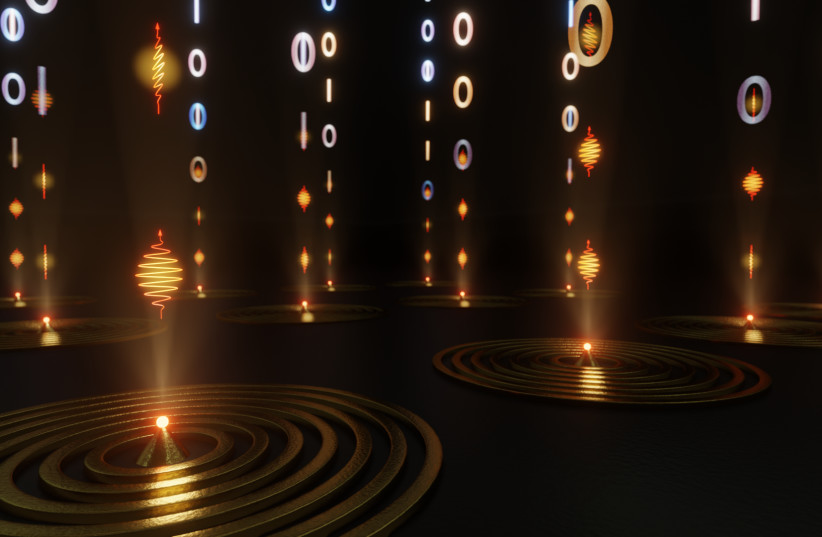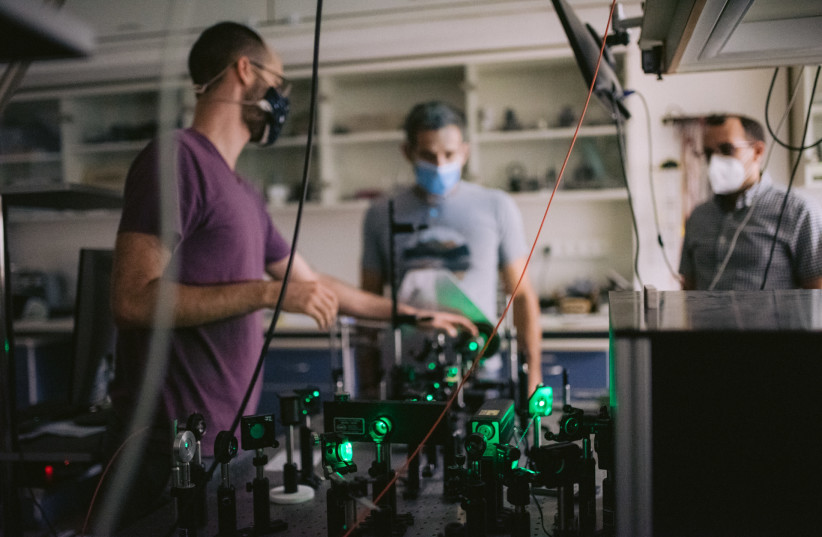Israeli, German researchers find breakthrough in quantum data security
A new breakthrough in quantum technology brings us closer to secure, efficient quantum computing.

Conceptual illustration of quantum dots in action. (photo credit: Lars Lüder)
Researchers from the Hebrew University of Jerusalem and the
University of Tübingen in Germany have achieved a breakthrough that
could provide a device for secure and reliable quantum computing, with the two universities publishing their findings in the peer-reviewed journal ACS Nano.
While
quantum computing will revolutionize how we use computers, conducting
tasks much faster with less electricity than today's computers, and will
also provide tools that will easily crack most of the encryption codes
currently used to protect the data we store on computers.
Most computer security available today relies on mathematical manipulations that, while highly effective today, could be easily cracked by a quantum computer. New methods of encryption that rely on the laws of physics will need to be developed to combat this, the researchers explained.
One such method is to use the quantum properties of single photons
(particles of light) to encrypt a message so that any attempt to hack it
would be immediately detectable by both the sender and recipient,
though getting a suitable source of single photons has been a challenge.
Professor
Ronen Rapaport and Dr. Hamza Abudayyeh of the Racah Institute of
Physics at the Hebrew University and Professor Monika Fleischer, Annika
Mildner and others at the University of Tübingen in Germany have
achieved a significant breakthrough which brings us closer to a simple,
efficient method of quantum encryption.

While
banks and governments are already investing in quantum encryption that
relies on laser beams, laser beams often release several photons at once
or none at all. In order to achieve optimum security, a source that can
emit a fast but steady stream of singly photons, in one direction and
at room temperature, is required.
The
research team developed a system that uses fluorescent crystals in the
form of specks, known as quantum dots, small enough that special
microscopes are needed to see them. Each dot is less than a thousandth
of the width of a human hair. A laser beam shone at the dot causes it to
light up and emit a stream of single photons.
The
dots are mounted individually on golden pinheads which are a
hundred-thousandth the size of a regular pinhead. These pinheads, called
nanocones, can increase the quantum dot emission of photons by 20-fold.
The stream of photons is then shot off in a single direction by a Bragg
grating, a transparent device that can be used to regulate the
wavelength of lasers.
The device can be used not just for quantum encryption, but also in
other situations that rely on quantum bits to encode information, such
as quantum computation.
"At present, we have a good prototype that has the potential for commercialization in the near future," said Rapaport.
"Laws
of science cannot be broken—a single photon cannot be split, no matter
how hard one tries. Mathematical complexities might be very difficult
to solve, however they are vulnerable to attack and breaches unlike
quantum-based security systems," said Abudayyeh.
The
team is working to improve the device so it can provide an even more
reliable and efficient stream of single photons for a wide range of
quantum technologies.

No comments:
Post a Comment
Stick to the subject, NO religion, or Party politics